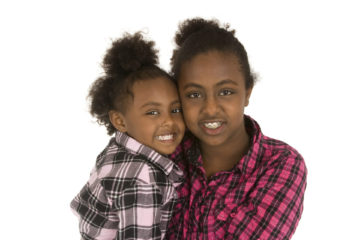Common health issues for Ethiopian immigrants are the long-term effects of malnutrition, the physical and psychological trauma from war, and infectious diseases.
NOTE: Understanding the role culture plays in health care is essential. Still, patients are individuals – each person’s preferences, practices, and health outcomes are shaped by many factors, a concept known as intersectionality.

Ethiopians in Minnesota
An estimated 17,000 Ethiopians live in Minnesota, according to the U.S. Census Bureau (2014)—20 percent were born in the U.S. Other population estimates are as high as 40,000. Ethiopians are the state’s second-largest immigrant population from East Africa, after Somalis.
For more than a century, limited rights to government representation, education, employment, free speech, and property led people to face jail or flee for their homeland. Ethiopians have been coming to Minnesota since the 1960s. During the early 1980s, many Ethiopian professionals and students already in the U.S. obtained political asylum. They now work in a variety of professional fields and are socioeconomically well-established in American society.
- ZeHabesha. A print and online newspaper covering news of interest to Ethiopian Minnesotans. In the Amharic language. Written and produced in Minnesota.
Younger Ethiopian Minnesotans speak English and 86 percent of foreign-born Ethiopians report speaking English well or very well. More than 80 languages and 200 dialects are spoken in Ethiopia. The most common spoken in Minnesota are Amharic and Oromo. Some Ethiopians may have fled to Somalia at some point and learned Somali; however, in general, materials written in Somali languages are not user-friendly to Ethiopian Minnesotans. Recently arrived Ethiopian Minnesotans may require the use of interpreters during office visits.
- Interpreter Roster: Spoken Language, Health Care, Minnesota Department of Health
Disaggregated data on African populations is often not available. Data on African-Americans, in general, may not apply to Ethiopian Minnesotans. Some health issues could be biologically tied to race; many are tied to social inequities, including poverty.
- Studies show that East African immigrants experience higher rates of cardiovascular disease, compared to the U.S. population.
- Data show that rates of diabetes and hypertension increase for people after emigrating from East Africa to Western countries.
Social determinants of health are economic and social conditions that influence the health of people and communities.
- Despite similar educational attainment, the median income for Ethiopian Americans is $36,000, compared to $50,000 for the overall U.S. population.
- 74 percent of Ethiopian Americans are in the labor force, but only 20 percent of them are professionals or management, as compared to 40 percent of the overall U.S. population.
- Some data shows that recent Ethiopian immigrants to the U.S. are poorer and less-educated than previous generations of Ethiopian immigrants to the U.S. Poverty may result in difficulties accessing preventive care.
More data on social determinants for Ethiopians:
- Ethiopian Population Minnesota, 2013-2017. Data on demographics, economy, health, housing, transportation, and workforce about these Minnesota residents, including native- and foreign-born residents. Cultural identification is based on a combination of race, ancestry, and birthplace. Minnesota Compass
The Ethiopian community in Minnesota is diverse. Many aspects of Ethiopian Minnesotan culture reflect the culture of the general U.S. population and generational differences impact social practices. Family units are small, with an average of 2.8 persons. Religion is highly important. Ethiopian Minnesotans are often Orthodox Christian, Muslim, mainline Protestant Christian, other Protestant Christian such as Jehovah’s Witness, or Jewish, or practice indigenous African spirituality.
Many Ethiopian Minnesotans have relatives still living in Ethiopia and are highly interested in current events in that country and region.
The traditional diet of Ethiopians emphasizes vegetables and whole grains. Many acculturated immigrants replace traditional meals with fast food—often called the “American diet”—contributing to an increase in obesity, diabetes, and hypertension.
Orthodox Christians do not eat meat, eggs, or dairy products on Wednesdays and Fridays. They have 250 fasting days, 180 of which are obligatory for laypeople. They fast on a number of occasions, including 55 days at Easter.
- A 40-Day Vegan Fast, Then, At Last, A January Christmas Feast. National Public Radio, January 2015.
Ethiopians have been moving to Minnesota since the 1960s. Wide differences exist in health care beliefs and practices between long-established and recent immigrants. Fasting practices may impact how medications are taken.
- 2017 Minnesota Statewide Health Assessment. Health equity information for Minnesota’s population groups.
Approximately one in five of all adults in the U.S. experiences mental illness in a given year. Discrimination, civil unrest, drought, and famine have resulted in direct and historical trauma to Ethiopian Minnesotans. The effects of historical trauma are being studied.
Older immigrants are less likely to have English skills which may increase loneliness, isolation, and depression. Adoptions of orphaned children from Ethiopia by White U.S. families has resulted in a population of Ethiopian Minnesotans who may feel a loss of homeland and disconnected sense of cultural identity.
- The Impact of Discrimination. Stress in American, American Psychological Association, 2015.
Some data shows that the life expectancy of East African immigrants tends to be 5 to 7 years longer (78, males) than the life expectancy of native-born African-Americans (72.5, males). The religious beliefs of the patient and family will influence life preferences.
- Voices of Ethiopia. Minneapolis-produced program of news, music, and culture from East Africa. KFAI.
- Ethiopian Cultural Profile. Information on history, culture and community with emphasis on health related issue. Ethnomed, University of Washington
Other Populations in Minnesota
African American | American Indian | Asian Indian | Bhutanese | Cambodian | Deaf / Hard of Hearing | Ethiopian | European American | Latinx | Hmong | Iraqi | Karen | LGBTQ | Liberian | Poverty | Rural | Russian | Somali | Vietnamese
